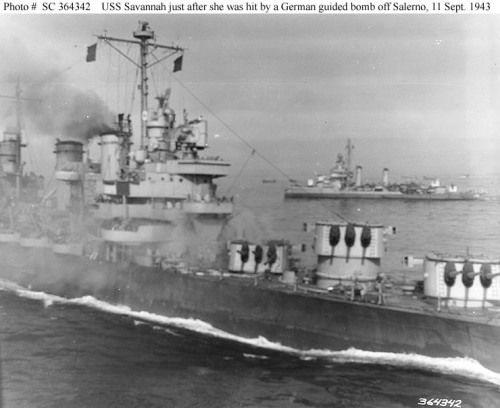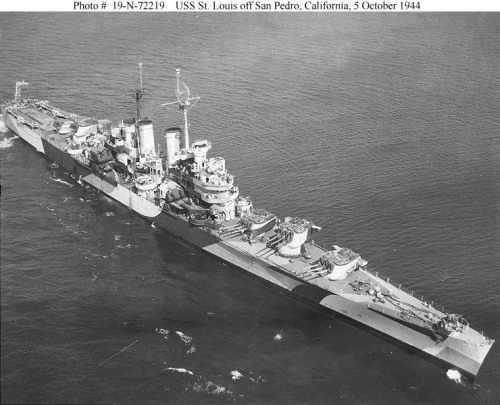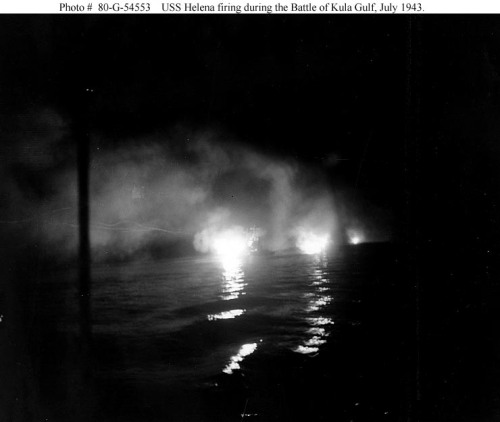
Friends of Padre Steve’s World,
In the very early morning hours of November 13th 1942, one of the most intense short range battles in modern naval history was fought in the waters between Guadalcanal and Savo Island. Fourteen ships of the Imperial Japanese Navy, including the battleships Hiei and Kirishima supported by the light cruiser Nagara and eleven destroyers under the command of Rear Admiral Hiraoki Abe were sent on a mission to destroy the Marine air base, Henderson Field on Guadalcanal in order to ensure the safety of a convoy carrying the soldiers of the 38th division of the Imperial Japanese Army, whose mission was to land than recover the island for the Japanese.

Rear Hiraoki Abe (above) and Daniel Callaghan (below)
The Americans, whose intelligence code-breakers had surmised Japanese intentions and in response Admiral Richmond Turner gathered a force of two heavy and five light cruisers, the USS San Francisco, USS Portland, USS Helena, USS Atlanta, and the USS Juneau and eight destroyers. He placed Rear Admiral Daniel Callaghan in command, although Rear Admiral Norman Scott aboard Atlanta was slightly junior but more experienced in fighting the Japanese at Guadalcanal, having led a US task force to victory at the Battle of Cape Esperance just a month earlier.
Rear Admiral Norman Scott
Adding to the US difficulties was that the force, hastily cobbled together had never operated before as a unit, and Callaghan choose San Francisco, which had previously commanded as his flagship, despite her lack of the latest surface search radar. Likewise, he placed the five ships with it at the rear of his formation, and did not issue a battle plan for his task force. In doing so he lost the element of surprise as Abe had no knowledge of a US task force off Guadalcanal.
San Francisco returns to Pearl Harbor, December 1942 under Golden Gate Bridge
As night gathered on the 12th of November, Abe steamed southeast down the slot and south of Savo Island, in an unwieldy formation, and his battleships piled high with special fragmentation shells designed to maximize destruction of shore targets and airfields but which were of little use against surface ships. Callaghan steamed northeast through Ironbottom Sound to intercept in a column formation with four destroyers in the van, followed by his five cruisers, and then his other four destroyers. According to Naval historian Samuel Elliott Morrison, the formation was chosen because it had worked for Scott at Cape Esperance, but he failed to take advantage of his advantage in radar and left the cruiser Helena, and the four destroyers with the latest radar in the rear of his formation.

Battleship IJN Hiei (above) USS Helena (below)

At 0124 hours radarmen aboard Helena picked up the Japanese Force at 27,000 and 32,000 yards and notified Callaghan. Instead of moving into a position to take the Japanese by a surprise gunfire and torpedo attack Callaghan decided to go directly at the Japanese, sacrificing his advantage in surprise and radar in favor of a short range melee.
Approaching each other at a combined forty knots the range closed rapidly until at 0141 the destroyer USS Cushing had to make a sharp turn to starboard to avoid a collision with the leading Japanese destroyers, the result was a near pile up for which which Callaghan demanded answers. The Captain of Atlanta explained his maneuvers by radioing Callaghan, “avoiding our destroyers.”
Within seconds the battle began. The lead US destroyers, Cushing, Laffey, Sterrett, and O’Bannon along with Atlanta engaging the lead Japanese destroyers, Nagara and Hiei.

The result was chaos. Laffey engaged Hiei at a range of 20 feet, inflicting damage and killing key members of Abe’s staff and Hiei’s senior officers. Yet it was another four minutes before Callaghan gave the order to open fire. In the mean time Atlanta was illuminated by Japanese searchlights and opened a murderous fire on the Japanese destroyer Akatzuki. However, the Japanese destroyer’s sacrifice was not in vain as other Japanese ships blasted Atlanta with gunfire and torpedoes, and putting her out of action. Cushing and Laffey were mortally wounded during the initial minutes of the action and both forces continued to close one another, the battle developing into a series of individual fights with each ship searching for targets as well as being targeted by the enemy.
San Francisco was smashed by Japanese shells, including those from the battleships.
Illustration of the Battle by Life Magazine
The barrage killed Admiral Callaghan, his staff, as well as the Commanding Officer and Executive officer of the ship. But for the actions of her crew led by her Chief Engineer LCDR Bruce McCandless, and Gunnery officer LCDR Wilborne the ship might have been lost. Instead she continued in action adding her 8” guns to the maelstrom. Portland delivered devastating fire from her 8” guns into several targets but was hit in the stern by a Japanese torpedo which limited her to steaming in circles, yet still engaging any target she could.
Helena, Juneau and the rear destroyers now entered the fray. Helena, a veteran of Cape Esperance used her superior radar and experience to help deliver San Francisco from other Japanese attacks from Japanese destroyers and Nagara. Juneau was hit by a Japanese torpedo which broke her keel and left her dead in the water. Destroyers Barton and Monssen were devastier by Japanese fire, Barton sinking seven minutes into her combat career. Monssen was mortally wounded.
 Damage to USS Portland
Damage to USS Portland
At 0200 Admiral Abe broke off the action. Individual fights still continued, Sterrett crippled the Japanese destroyer Yudachi which was finished off of Portland shortly after sunrise. Hiei was crippled and was further damaged by Marine aircraft from Henderson Field before her crew scuttled her, she was the first Japanese battleship to be sunk in combat during the war. Cushing, Monssen, and Atlanta each lost their fight to stay afloat and Portland, assisted by the tug USS Bobolink reached the safety of Tulagi the next day. After temporary repairs she sailed for Australia and then the United States for full repair and modernization.
The Sullivan Brothers
As Captain Hoover, the senior surviving officer of the US task force took his surviving, and still navigable ships out of harm’s way. It was a harrowing task. Only Helena of his cruisers was fully operational, and of his three destroyers, only Sterrett and Fletcher had operational sonar, but they were not enough to protect the crippled cruisers. At 1101 a torpedo hit Juneau, blasting her to pieces and leaving about one hundred survivors to fend for themselves as Hoover sought to avoid further attacks. For ten days the surviors suffered until an Army Air Force B-17 spotted them. By then only ten sailors remained alive from the crew of the Juneau, over seven hundred others, including the five Sullivan Brothers either went down with the ship or died awaiting rescue.
USS San Francisco Memorial, the outer wall is from the bridge of the ship still pierced by Japanese shell fire
Of the Commanders, Admiral Abe was forced into retirement at the age of 53, Admirals Callaghan and Scott died in the battle, and Captain Hoover was tried, but not convicted at Court Martial for the loss of Juneau and her crew.
But, the Naval Battle of Guadalcanal was not yet over…
To be continued,
Peace
Padre Steve+



























